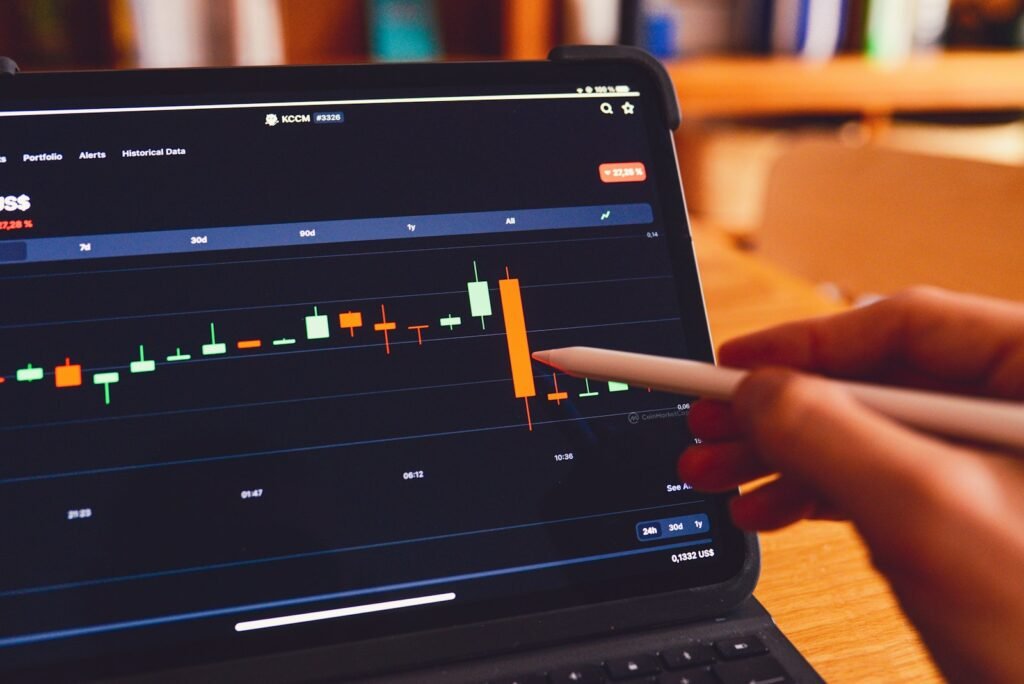The cryptocurrency market operates 24/7, presenting both endless opportunities and the challenge of constant monitoring. This is where automated trading systems come into play, and when enhanced with artificial intelligence, they transform into powerful tools capable of analyzing market patterns faster and more accurately than any human. Building a crypto trading bot AI might sound like a task for elite developers, but with a structured approach, it’s an achievable project that can revolutionize your trading strategy. This guide will walk you through the fundamental steps of creating your own AI-powered trading bot, from defining its strategy to deploying it in a live market environment.
Also Read: CEX vs DEX: Which Crypto Exchange Is Right for You?
Understanding the AI Trading Bot Concept
A crypto trading bot AI is a software program that automatically executes trades on your behalf based on a predefined strategy, with the added intelligence of machine learning algorithms. Unlike simple rule-based bots that follow static instructions, an AI-powered bot can learn from market data, adapt to new conditions, and identify complex patterns that are invisible to the human eye. It can process vast amounts of information, including price movements, trading volume, order book data, and even news sentiment in milliseconds. The core idea is to remove emotion from trading decisions and capitalize on market inefficiencies around the clock. However, it’s crucial to understand that even the most advanced AI bot does not guarantee profits; it is a tool for executing a strategy with discipline and speed.
Laying the Foundation: Defining Your Trading Strategy
Before writing a single line of code, the most critical step is defining a clear trading strategy. Your crypto trading bot AI will only be as effective as the logic it follows. Will it be a market-making bot that profits from the bid-ask spread? A trend-following bot that buys during uptrends and sells during downtrends? Or perhaps an arbitrage bot that exploits price differences across exchanges? Your strategy should be based on backtested ideas with a positive expected value. For an AI bot, this strategy will include the machine learning model’s objective, such as predicting price direction over the next hour or classifying market conditions as high or low volatility. A well-defined strategy provides the blueprint for every component that follows.
Also Read: Crypto Wallets: Hot vs Cold Storage Comparison
Data Acquisition and Feature Engineering
An AI model is only as good as the data it trains on. The next step involves gathering high-quality historical and real-time market data. This includes price data (open, high, low, close), volume, and potentially alternative data like social media sentiment or on-chain metrics. This phase, known as feature engineering, is where you transform raw data into meaningful inputs for your AI model. You might create features like moving averages, Relative Strength Index (RSI) values, or volatility bands. The goal is to provide the model with indicators that have predictive power. For a crypto trading bot AI, having clean, reliable data from reputable sources via APIs is non-negotiable, as garbage in will inevitably lead to garbage out.
Choosing and Training the Machine Learning Model
This is the heart of your crypto trading bot AI. You need to select a machine learning algorithm suitable for financial time-series data. Popular choices include Recurrent Neural Networks (RNNs) and Long Short-Term Memory (LSTM) networks, which are adept at recognizing patterns in sequential data. Alternatively, ensemble methods like Gradient Boosting can also be effective. The process involves splitting your historical data into a training set and a testing set. The model learns the relationship between your engineered features and future price movements on the training set. Its performance is then validated on the unseen testing set to check for overfitting, where a model performs well on historical data but fails in live markets. This iterative process of training and validation is crucial for building a robust bot.
Also Read: How to Buy Ethereum: The Complete Beginner’s Guide

Integrating with Exchange APIs
For your bot to trade, it must communicate with a cryptocurrency exchange. This is done through the exchange’s Application Programming Interface (API). After creating an account on an exchange like Binance or Coinbase, you generate API keys. These keys allow your bot to access market data and, crucially, execute buy and sell orders. It is vital to use API keys with appropriate permissions, never granting withdrawal rights to a trading bot. The code will include functions to fetch real-time prices, check the balance of your assets, and place limit or market orders. This integration must be built with robust error handling to manage network issues or exchange downtime gracefully.
Building the Risk Management Framework
The most sophisticated AI model is useless without a strong risk management system. This is what separates amateur projects from professional tools. Your crypto trading bot AI must include hard-coded rules to protect your capital. Key elements include position sizing (never risking more than a small percentage of your portfolio on a single trade), stop-loss orders to limit losses, and a maximum drawdown limit that will pause the bot if losses exceed a certain threshold. You should also implement circuit breakers that halt trading during periods of extreme volatility or if the bot’s behavior deviates from its expected pattern. Risk management is not an afterthought; it is the foundation of sustainable automated trading.
Backtesting and Paper Trading
Before risking real capital, you must rigorously test your bot. Backtesting involves running your bot’s strategy against historical data to see how it would have performed. This helps you refine parameters and identify weaknesses in the strategy. However, past performance is not indicative of future results. The next essential step is paper trading, where the bot operates in real-time with simulated money. It connects to the exchange’s API and makes real decisions based on live data, but the trades are not executed. This phase tests the entire system data pipeline, AI model, and exchange integration in a live environment without financial risk.
Also Read: How to Buy Bitcoin: Step‑by‑Step Tutorial
Deployment and Continuous Monitoring
Deploying your crypto trading bot AI to a secure, always-on server like a virtual private server (VPS) is the final step. Once live, the work is not over. Continuous monitoring is essential. You should set up alerts for critical events, such as a filled order or a technical error. Importantly, the AI model requires periodic retraining with new data to ensure it adapts to changing market conditions. The cryptocurrency market is dynamic, and a model that was profitable last month may not be effective today. The lifecycle of a successful bot involves constant monitoring, evaluation, and iteration.
Conclusion
Building a crypto trading bot AI is a complex but rewarding endeavor that combines finance, programming, and data science. It requires a methodical approach, starting with a solid strategy, progressing through data preparation and model training, and culminating in rigorous testing and robust risk management. While the promise of passive income is alluring, the true value lies in the deep understanding of markets and AI you gain through the process. By following these steps and prioritizing capital preservation above all else, you can develop a powerful tool that executes your trading vision with unparalleled discipline and efficiency.

